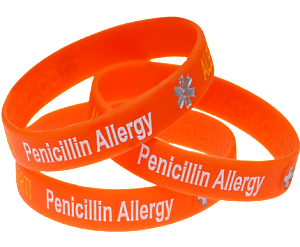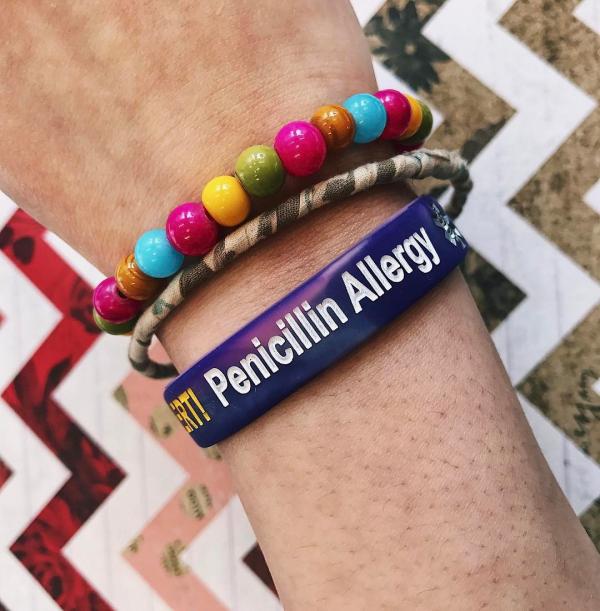penicillin allergy
-
What penicillin allergy means for you
Anyone who’s recently been diagnosed with a penicillin allergy will have many questions about how to manage their day-to-day life. Take a look at our article where we explain the facts behind this allergy and offer some different ways to manage it. Once you know more about your penicillin allergy and how to live with it, it will become a... -
Penicillin Allergy Wristband: How can it help?
Most Australians will undergo treatment using penicillin at some point in their lives. The vast majority of these individuals will experience no adverse reactions whatsoever. However, penicillin allergies still represent a clear danger. And they are most common in individuals aged between 20 and 49. We’ve put together a guide to help you understand the symptoms of a penicillin allergy, and also to explain how adequate testing. Especially how the wearing of a penicillin allergy wristband can help you live a normal, healthy life. Continue reading → -
Allergy Bracelets
 One of the most common medical allergies is to penicillin – possibly because it is one of the most common antibiotics of all time. Having an allergy bracelet that tells treating professionals you are allergic to penicillin is one of the surest ways to prevent disastrous anaphylactic shock. Anaphylactic shock is an extreme – and rare – event. Most people simply come out in symptoms like rashes, hives, itchy eyes and swollen lips, tongue, or face. The symptoms of an anaphylactic reaction, which can be deadly, usually happen within an hour of taking penicillin. Symptoms include difficulty breathing, hives, wheezing, dizziness, loss of consciousness, rapid or weak pulse, skin turning blue, diarrhoea, nausea, and vomiting. Continue reading →
One of the most common medical allergies is to penicillin – possibly because it is one of the most common antibiotics of all time. Having an allergy bracelet that tells treating professionals you are allergic to penicillin is one of the surest ways to prevent disastrous anaphylactic shock. Anaphylactic shock is an extreme – and rare – event. Most people simply come out in symptoms like rashes, hives, itchy eyes and swollen lips, tongue, or face. The symptoms of an anaphylactic reaction, which can be deadly, usually happen within an hour of taking penicillin. Symptoms include difficulty breathing, hives, wheezing, dizziness, loss of consciousness, rapid or weak pulse, skin turning blue, diarrhoea, nausea, and vomiting. Continue reading →


